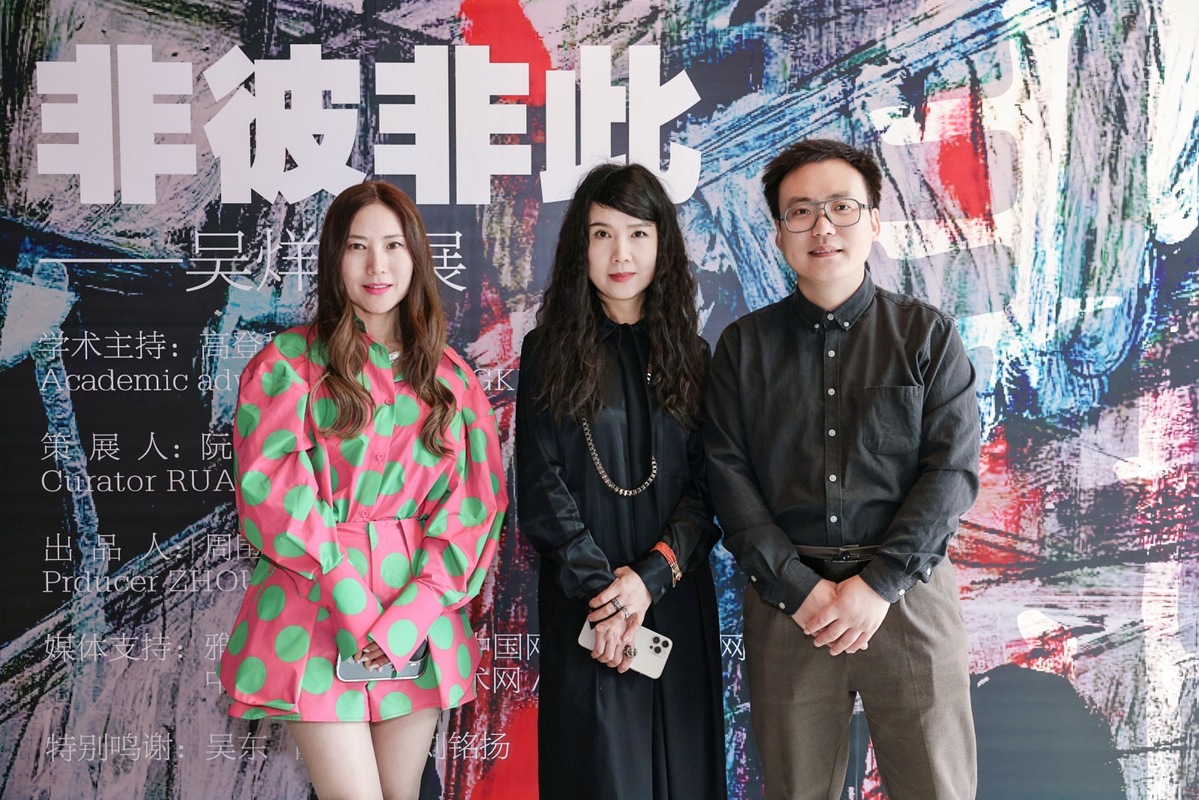

In his analysis of Paul Cezanne's work, French philosopher Maurice Merleau-Ponty said that impressionists made the objects themselves the sources of light, not a thing covered by reflective light; they were lightened up, vaguely, from inside, and thereafter presented an impression of substance.
"The light that comes from the inside of an object, is an inner atmosphere," says Gao Dengke, associate director of the Social Aesthetics Research Institute, of Tsinghua University. He says the work of Wu Yang, whose ongoing solo exhibition is under his academic supervision, stresses on the expression of colors and physical experiences in the straightforward way, and conveys a beauty of the mood in someone's inner side.
Neither Here Nor There, now running at Espoir Gallery in Nanjing, Jiangsu province, and curated by Ruan Xiaoyi, gathers over 40 pieces of watercolors mixed with other media, installations and oil paintings by Wu. Wu studied art at Anhui Polytechnic University and Central Academy of Fine Arts. In the last decade she lived between Beijing and London, and then New York City.
Her exhibition is an examination of her changing statues when traveling around the world and living for a long time in different cities and cultures over the past decade, as well as her thought of the influence and meaning of such a lifestyle.
That has been a shared condition, physically and mentally, of many people in such a globalized era, which is being depicted under Wu's strokes: a confusion of one's multiple identities, troubled consciousness when joggling in between changing time zones and spaces, and a pursuit of one's cultural roots. And in her work, and struggles to some extent, the artist has tried to achieve an inner balance that will also shine upon her audiences.
"People would find in Wu Yang's world of art that reflection and a sense of romanticism coexist in a way which challenges people's common experiences," Gao says, "but it forms a mood, an undertone of art unique to the artist."
The exhibition runs through April 20.